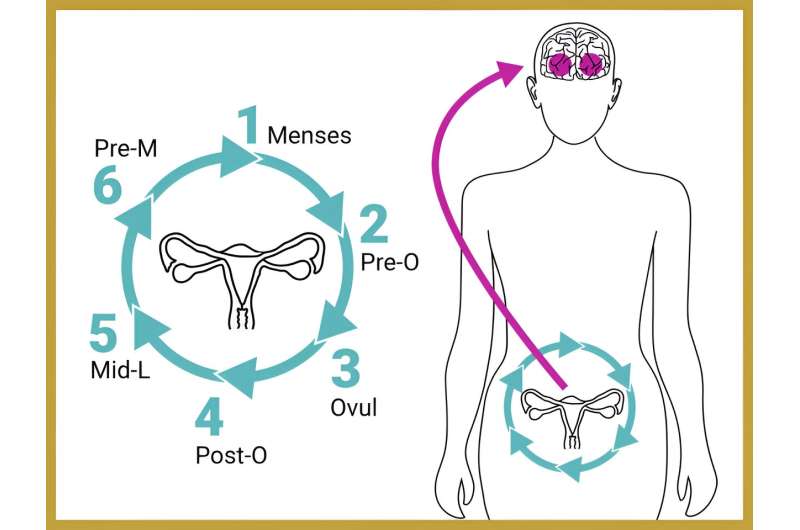Brain regions important for memory, perception are remodeled during the menstrual cycle, study finds

Central learning and memory hubs change in response to sex hormones. A new study in Nature Mental Health by Rachel Zsido and Julia Sacher of the Max Planck Institute for Human Cognitive and Brain Sciences and the University Clinic in Leipzig, Germany, links rhythmic oscillations in ovarian hormone levels in women during the menstrual cycle to changes in brain structure.
Ovarian hormones have significant effects on the brain, and early menopause may be associated with an increased risk of accelerated brain aging and dementia later in life. However, the effects of ovarian hormone fluctuations on brain structure earlier in life are less defined. In their current study, Zsido and Sacher show that fluctuations in ovarian hormones affect structural plasticity in key brain regions during the reproductive years.
To do this, the scientists collected blood samples from 27 female study participants, used ultrasound to track follicle growth in the ovaries to pinpoint ovulation timing, and utilized ultra-high field 7 Tesla MRI to zoom into subregions of the medial temporal lobe and hippocampus. That's because these regions are dense with sex hormone receptors and are critical for cognitive function, such as episodic memory.
Capturing dynamic changes in sex hormones
Unlike previous studies, Zsido and Sacher examined female brains not just at one point in time, but at six points across the menstrual cycle. This longitudinal design captures the dynamic changes in sex hormones—during the menstrual cycle, estradiol increases across the first half of the cycle and peaks around ovulation, while progesterone dominates the second half of the cycle.
Estradiol is one of the most important sex hormones in the female body and is instrumental in maintaining the reproductive system. Progesterone is another key sex hormone for the reproductive system that prepares the uterus for pregnancy and has anxiety-relieving, sleep-inducing, relaxing and calming effects. So, much like the ebb and flow of the tide, the female brain is attuned to a constant rhythm of hormones, which this research study maps for the first time.
"We were able to determine that certain medial temporal lobe regions, which are crucial for episodic memory and spatial cognition, expand under high estradiol and low progesterone levels—that is, these brain areas remodel themselves in synchronization with the menstrual cycle. We want to clarify whether these rhythmic changes are altered in individuals at risk for memory and affective disorders in several follow-up studies," says Julia Sacher.
"In general, the female brain is still massively understudied in cognitive neuroscience. Even though sex steroid hormones are powerful modulators of learning and memory, less than 0.5% of the neuroimaging-literature considers hormonal transition phases, such as the menstrual cycle, the influence of hormonal contraceptives, pregnancy and menopause.
"We are committed to addressing this fundamental research gap. To identify the mechanisms underlying risk and resilience to mental health disorders, such as depression or Alzheimer's disease, we need a deeper understanding of how the healthy female brain adapts to change."
More information: Rachel G. Zsido et al, Ultra-high-field 7T MRI reveals changes in human medial temporal lobe volume in female adults during menstrual cycle, Nature Mental Health (2023). DOI: 10.1038/s44220-023-00125-w
Journal information: Nature Mental Health
Q&A: How hormones and the menstrual cycle can affect women with ADHD
No comments:
Post a Comment